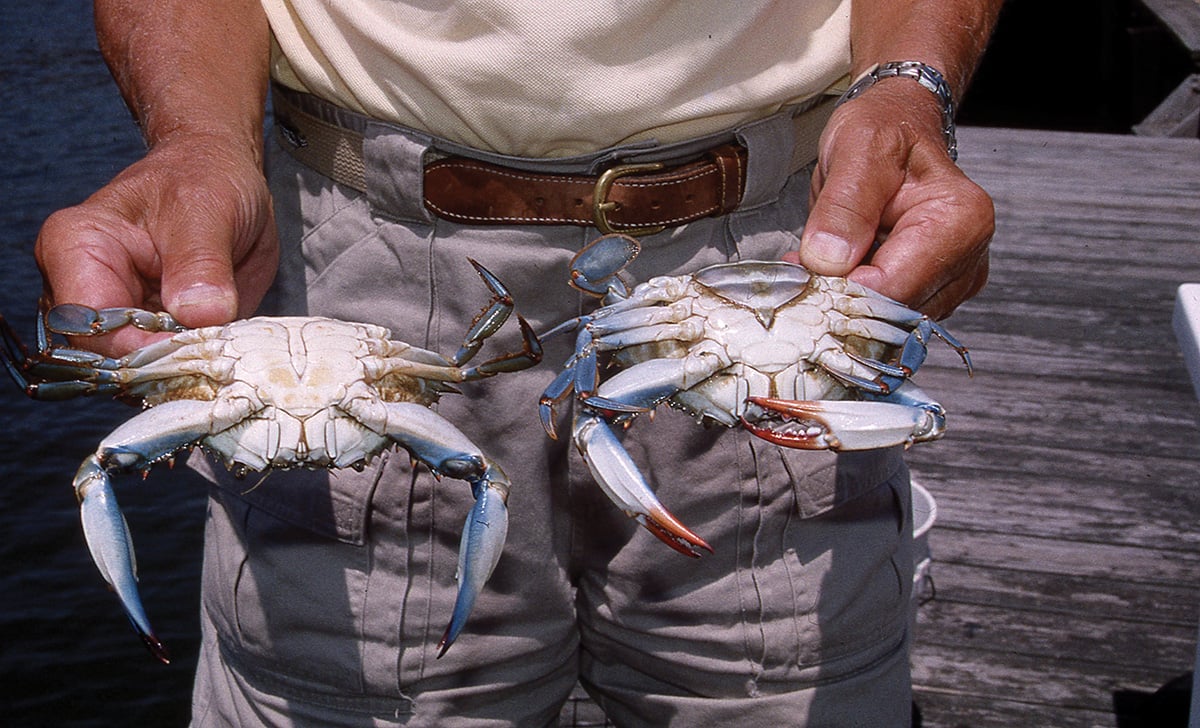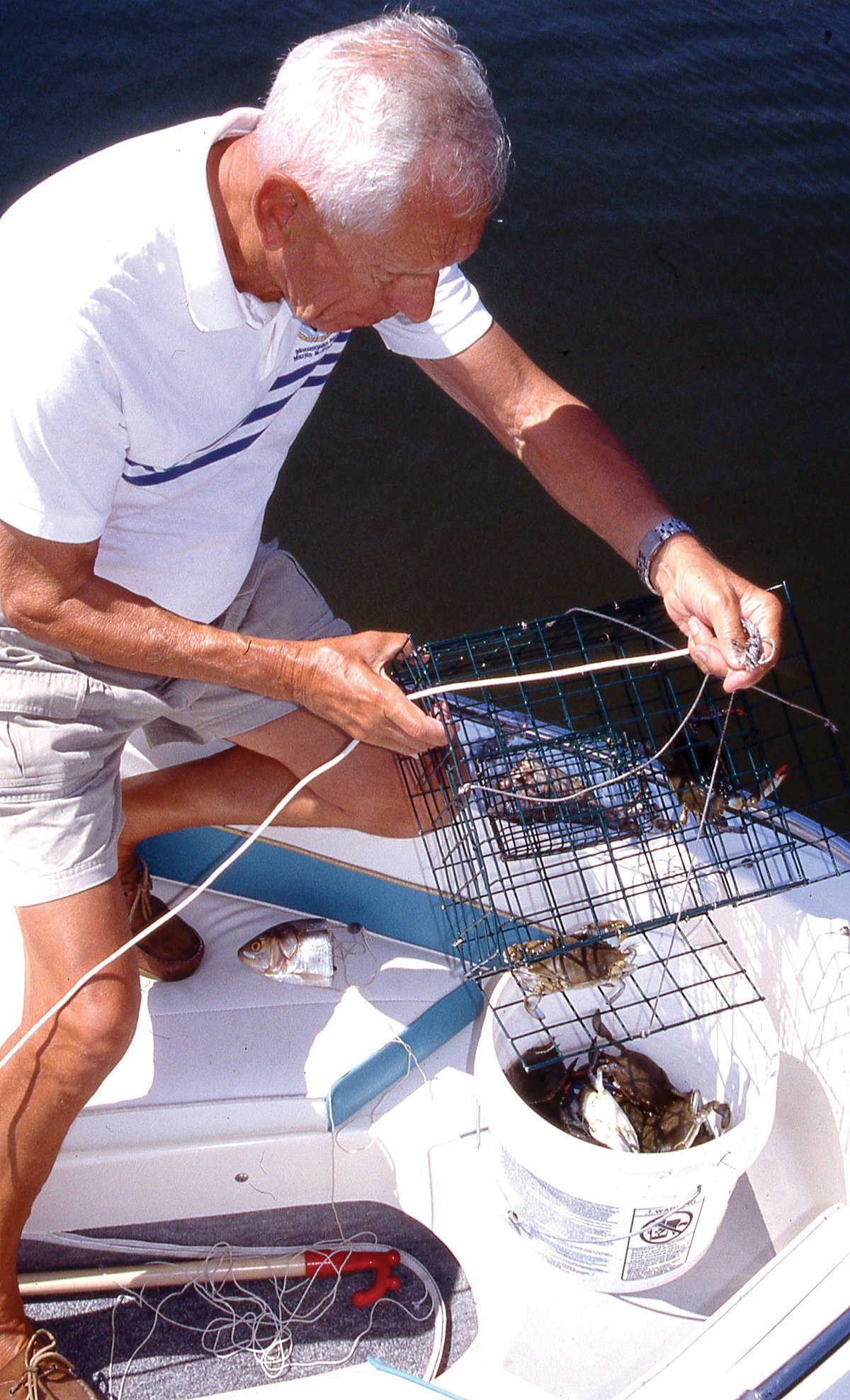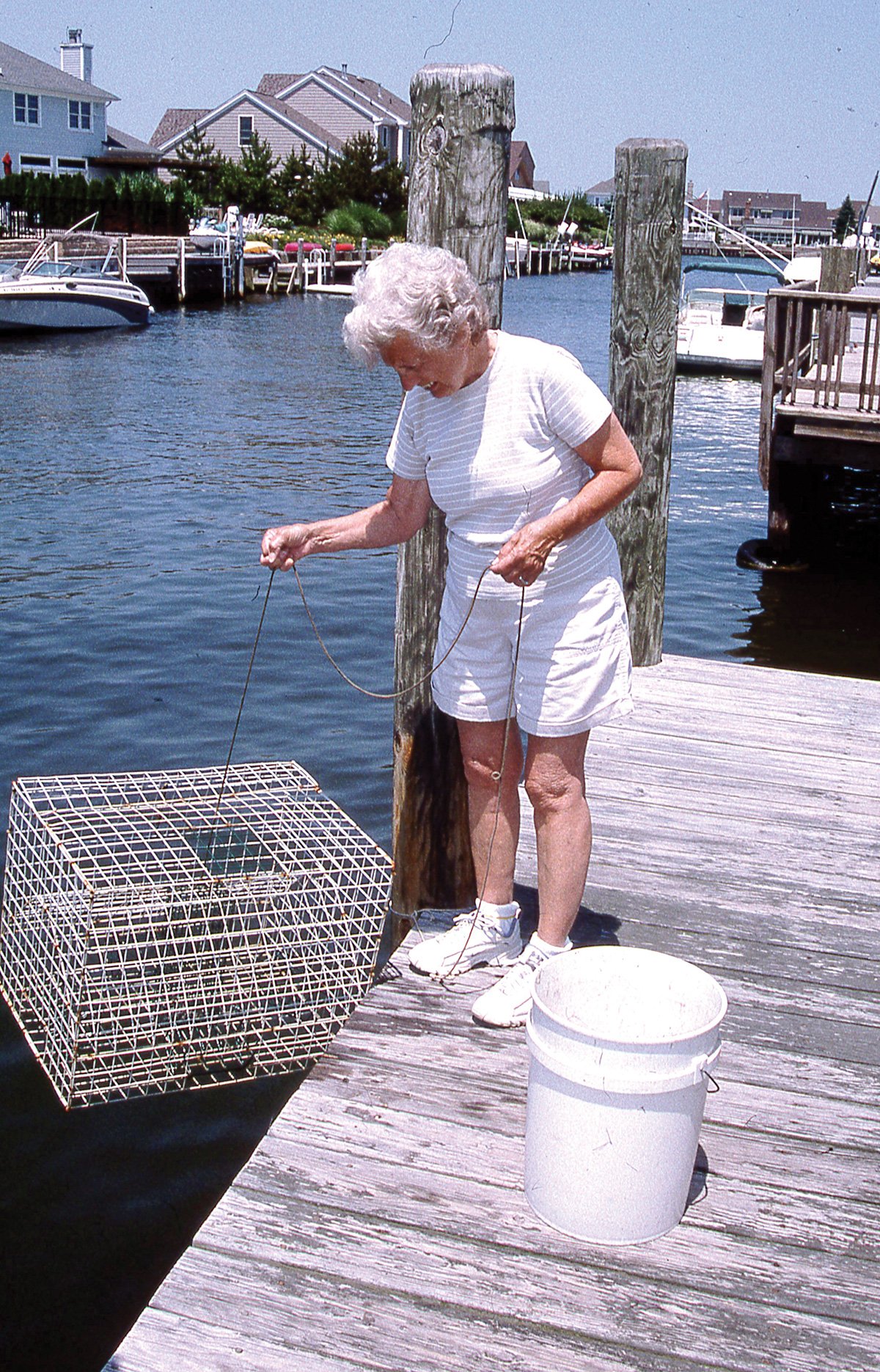
When windy conditions and small weather windows make leaving the dock impossible, it’s time to go old school.
I doubt if there’s a fisherman around who hasn’t experienced the frustration of having the best made plans spoiled by weather or uncooperative fish. Indeed, it’s happened to me often, with a strong summer northeaster shutting down the inshore fluke options or making bottom bouncing for porgies and sea bass impossible.
But all is not lost, because from the bay and river waters from which you normally sail there are countless bottom feeders eagerly willing to cooperate with you. The blue claw crab, or Callinectes sapidus Rathbun (the scientific name translates to “beautiful swimmer that is savory”) is the housekeeper of our coastal waters, and can be a game saver on days when other summer options are limited.
Drop Line Crabbing
Savory doesn’t do the blue claw justice, as there isn’t a word that adequately describes its delicious flavor. From the time they vacate their winter quarters each spring until again burying themselves during late fall, June and I regularly seek them out. Almost without exception we return home with a fine catch, providing everything from cocktail hour treats to delicious crab cakes, or just plain pickin’ and eatin’ fun while getting their delicious meat from the shell.
You can well understand why the blue claws are so plentiful, as the scientific community reports that a female may produce 8,000,000 eggs in her lifetime. From those eggs come the baby crabs that inhabit every bit of bottom in every one of Jersey’s bays and rivers. Now all you have to do is rig up, bait up and go catch ‘em!
Unquestionably the easiest and an effective method is just using a 15-foot long handline of ordinary cotton or nylon. Then tie a crab bait rig to the end of it, consisting of a 2-inch long V shaped stainless steel snap and a 1- or 2-ounce lead sinker molded to it. You’ll also need a long-handled crab net, a 5-gallon plastic bucket and, of course, some bait to place on the rig.
For bait I usually purchase a half dozen whole bunker in a local bait shop, as they’ve proven very effective because they emit a strong scent that readily attracts crabs. But I’ve also used the head sections of fish I’ve cleaned, including everything from bluefish to sea bass porgies, and mackerel too. The head section of the bait works best, because of its bone structure it takes longer for a crab to devour it. Just cut a head section or a 3-inch long chunk, and open the snap on the rig, slipping the needlelike end through the bait, and securely close it.
Now all you have to do is find yourself a dock or bulkhead with easy access and position yourself so it doesn’t interfere with anyone, and let that baited rig settle to the bottom, with depths in the 8- to 12-foot range usually the most productive. Permit the bait to rest on the bottom, and every couple of minutes lift back gently on the line. Often you’ll feel more resistance than that of just the baited rig, sometimes even feeling a lively blue claw ripping at the bait.
Just begin a slow hand-over-hand retrieve and when the rig with hopefully a blue claw crab clinging to it is about a foot from the surface just use your long handled landing net and scoop it up. Just turn the net and let the crab drop into the bucket, and return the bait to the water. Sometimes it’s slow waiting for a crab to pick at the bait, but often it’s nonstop.
Crab Hotel
Another effective method of securing a good catch is to purchase a couple of collapsible crab traps. There are four-sided and three-sided traps, and when the baited trap is lowered to the bottom the sides collapse and rest on the bottom, enabling easy access for a crab to find the bait, which is secured to the bottom of the trap. Then, permit it to rest there for a while and to check its contents give the cord a secure upright pull, which will close the traps sides, and you can pull it to the surface. Oftentimes you’ll have three or four frisky crabs excitedly scurrying about within the trap, which can immediately be placed into the bucket.

If you have a friend with a shore property, where he’d permit you to place a permanent trap, then this is the way to go, as the box traps are for the most part 2-foot by 2-foot traps made of 1 by 2 wire meshes, with a lower section and an upper section, with four entry spots. Crab pots must be constructed to include a biodegradable panel. A whole bunker is placed in the trap’s bait compartment, and as crabs enter the trap they find it impossible to exit because of the entry’s design. As a result they often seek to exit by moving to the upper level of the trap, where it’s often possible to accumulate a dozen or more crabs in just a short while.
All of the crabs you catch may be kept for several days in the water by placing them in holding traps, which enables you to accumulate a sizeable catch. On arriving home, place a couple of inches of water in a very large pot and bring it to a boil; drop the live crabs into the water and boil/steam them for about 10 to 15 minutes.
In New Jersey, blue claw crabs may be taken recreationally with hand lines, manually operated collapsible traps or scoop nets without a license. A non-commercial crab pot license is required ($2) for the use of not more than two non-collapsible Chesapeake-style crab pots or two trot lines to harvest crabs. New Jersey regulations require that a blue claw crab measure 4-1/2 inches point to point on its back shell (3 inches for shedder, 3-1/2 inches for soft shell), with a limit of one bushel daily.
In Delaware, a fishing license is required to crab in all state waters. The minimum size for hard-shell blue crab is 5 inches, except mature females (female blue crabs with a U-shaped apron may be retained at any size). Females bearing eggs, commonly known as sponge crabs, may not be taken and should be returned to the water immediately. The recreational daily limit is one bushel per person.

| CRABBY CONTEST ASSAULT ON PATCONG CREEK |
|---|
| Considered “the nation’s largest crabbing tournament,” the 9th Assault on Patcong Creek takes place from June 22-23 in Somers Point, NJ. What began in 2010 as a gathering of a dozen or so crabbing buddies has since grown to about 109 boats and more than 350 competitive crabbers using traps and droplines by boat or bank.
The winning team receives bragging rights with names etched upon the coveted Assault on Patcong Creek trophy, while champion crab is sent to a taxidermist. The winners will receive their winning crab mount at the next year’s Assault on Patcong Creek. A highlight of the event is the after-tournament barbecue, held for sponsors, volunteers, crabbers and their families where competitive crabbers traditionally contribute their catch to the steam pot for the party. For tournament information call 609-517-2531 or visit www.assaultonpatcongcreek.com. |




